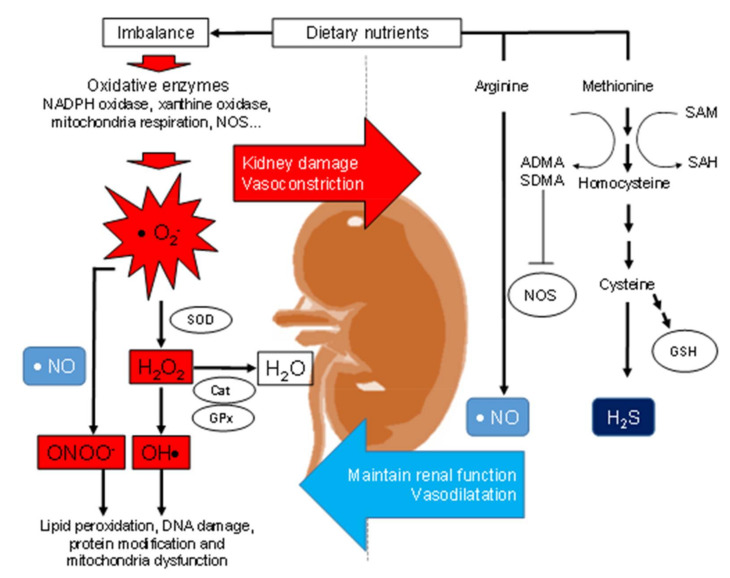Figure 2.
Schematic representation of the interrelationships between reactive oxygen species (ROS, antioxidant defense system, nitric oxide (NO), and hydrogen sulfide (H2S) signaling system in the kidney to control blood pressure and renal function. Imbalanced nutrition can activate reactive oxygen species (ROS) and reactive nitrogen species (RNS), leading to kidney damage and vasoconstriction. Several oxidative enzymes can produce superoxide anion (O2−), such as NADPH oxidase, xanthine oxidase, and mitochondrial respiration. The superoxide anion can interact with nitric oxide (NO) to form peroxynitrite (ONOO−). Hydrogen peroxide (H2O2) and hydroxyl anion (OH−) are reactive byproducts of superoxide. These ROS can be produced via superoxide dismutase (SOD), catalase, or glutathione peroxidase (GPx). On the other hand, dietary nutrients provide L-arginine and L-methionine for the synthesis of NO and H2S, respectively. Both NO and H2S are vasodilators and play a key role in maintaining renal physiology. While L-arginine can also be posttranslational methylation to form asymmetric or symmetric dimethylarginine (ADMA or SDMA), both are endogenous inhibitors of nitric oxide synthase (NOS). There is a relationship between the L-arginine-NO and the H2S-synthesizing pathway. The protein arginine methyltransferases (PRMTs) methylate L-arginine to generate ADMA/SDMA and concurrently demethylate methionine to form homocysteine. S-adenosylmethionine (SAM) is used as a substrate for methyl transfers that yield S-adenosylhomocysteine (SAH). Homocysteine can further be broken down to generate L-cysteine and glutathione.

